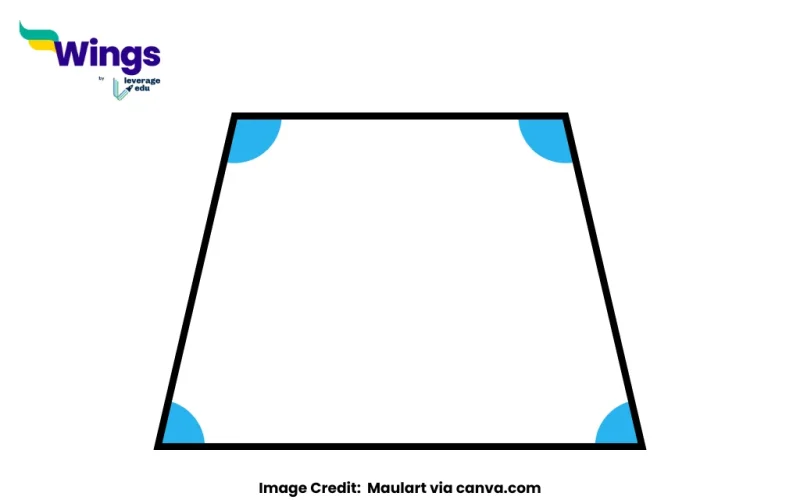A quadrilateral is a closed polygon with four sides, four vertices, and four angles. It is one of the basic shapes in geometry and includes different types such as squares, rectangles, parallelograms, rhombuses, and trapeziums.
Among the important properties of quadrilaterals is the concept of adjacent sides, which helps in understanding their structure and classification.
Definition of Adjacent Sides in a Quadrilateral
Adjacent sides of a quadrilateral are two sides that share a common vertex. They are next to each other and form an angle at the vertex they meet.
For example, in a quadrilateral ABCD, the sides AB and BC are adjacent because they meet at vertex B. Similarly, the pairs BC and CD, CD and DA, and DA and AB are also adjacent sides.
Understanding Adjacent Sides with Examples
Here are some examples of the adjacent sides:
- Square
- A square has four adjacent side pairs because all sides are equal and meet at right angles.
- Example: In a square PQRS, the adjacent sides are PQ and QR, QR and RS, RS and SP, SP and PQ.
- Rectangle
- A rectangle also has four adjacent side pairs. The opposite sides are equal, but adjacent sides are of different lengths.
- Example: In a rectangle EFGH, the adjacent sides are EF and FG, FG and GH, GH and HE, HE and EF.
- Parallelogram
- In a parallelogram, opposite sides are equal and parallel, but adjacent sides meet at an angle.
- Example: If JKLM is a parallelogram, the adjacent sides are JK and KL, KL and LM, LM and MJ, MJ and JK.
- Trapezium
- A trapezium has one pair of parallel sides, and its adjacent sides form non-parallel angles.
- Example: If ABCD is a trapezium, the adjacent sides are AB and BC, BC and CD, CD and DA, DA and AB.
Importance of Adjacent Sides
Below are listed the importance and necessity of the adjacent sides.
- Used in Angle Calculation: The angles formed between adjacent sides determine the shape of the quadrilateral.
- Essential for Construction: When drawing or constructing quadrilaterals, understanding adjacent sides helps in positioning vertices correctly.
- Basis for Formulas: Many formulas in geometry, such as area and perimeter calculations, use adjacent side lengths.
In a quadrilateral, adjacent sides are two sides that meet at a common vertex. This concept is crucial in understanding different quadrilateral properties and is widely used in geometry for construction, problem-solving, and classification of shapes.
Common Doubts
 60,000+ students trusted us with their dreams. Take the first step today!
60,000+ students trusted us with their dreams. Take the first step today!


 One app for all your study abroad needs
One app for all your study abroad needs










